The Rosie the Riveter Museum: Fascinating WWII home front history
When I heard about a museum dedicated to Rosie the Riveter, I had to see it.
Who was Rosie the Riveter?

The name “Rosie the Riveter,” according to Wikipedia, was first used in a 1942 hit song, praising an assembly line worker helping in the war effort. The popular image of Rosie the Riveter stems from a World War II propaganda ad, used to recruit women to work in factories to support the war effort. The model was Rose Will Monroe, who worked as a riveter at a factory in Michigan.
I’ve always loved Rosie the Riveter’s image, both in the original poster and in the Norman Rockwell version of her that appeared on the cover of the Saturday Evening Post. She is strong, confident, curvaceous and capable. She is alone, not dependent on a man, and exudes self-sufficiency and pride.
The Rosie the Riveter Museum
The Rosie the Riveter World War II Home Front museum in Richmond, California, is a National Historical Park, run by the National Park Service.
The first thing you should know about the museum is that it is not easy to get to or to see in its entirety without a car. My daughter and I took the BART train to the end of the line in Richmond, then a taxi to the museum itself. Because the museum has several parts widely separated along a waterfront, we didn’t get to see everything.
The museum itself is in the Visitor Center, tucked away behind a Ford assembly plant that, during the war, cranked out jeeps and tanks for the war effort.
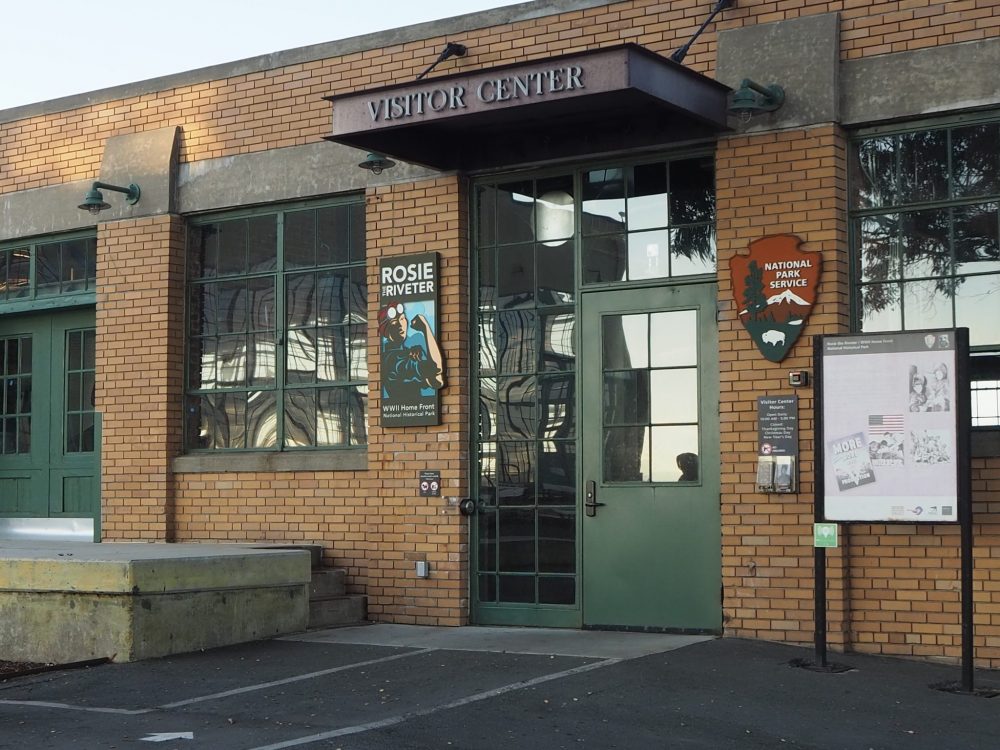
Rosie the Riveter’s Home Front
The two sections within the museum have different focuses. One section looks at the home front in general: how the government mobilized civilians to contribute to the war effort. Besides increasing industrial production drastically, campaigns urged civilians to “Use it up – Wear it out – Make it do – Or Do without.” They planted “Victory Gardens” to increase food production, saved cooking fat to use in making explosives, and recycled metals, to name a few of the campaigns.
This section includes information about Rosie the Riveter: where the image came from, who it was based on, how it was used, and so on.
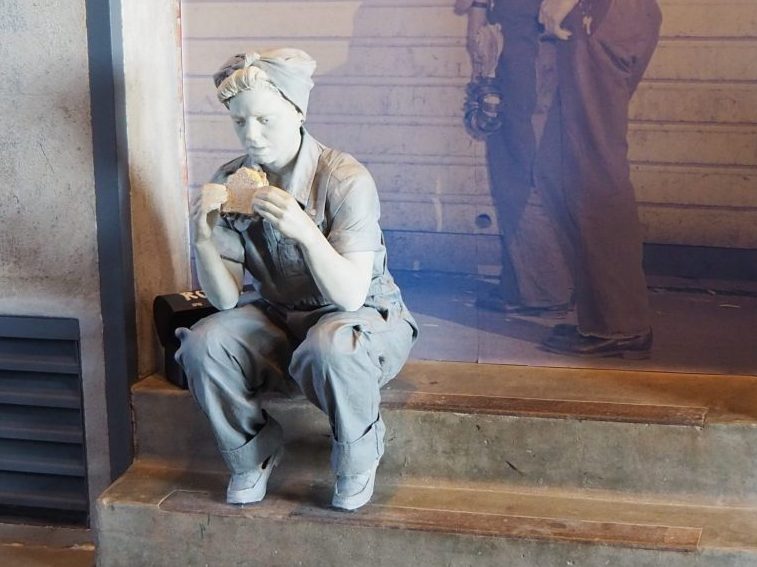
During World War II, many men joined the war effort in combat roles or other work within the military. Industries had already cranked up production even before the attack on Pearl Harbor brought the US into the war. Once the US joined the war, women had to take over jobs in armaments production, but also lots of other war-related, traditionally male, roles. Despite the fact that the factories needed them, they had to prove they were capable of doing the hard physical labor the work demanded.
At the same time, many African-Americans and other minorities gravitated to industrial towns looking for work. At first, discrimination blocked them. In 1941, however, President Roosevelt signed an Executive Order that banned discriminatory hiring in war-related industries. Of course, discrimination didn’t end, but many did get jobs in factories.
When the war ended, many of the women and the minority workers lost their jobs on the excuse that the returning veterans needed them more. Nevertheless, the taste of independence the women had experienced was, for many, life changing. For minorities, their experiences during the war, fighting discrimination by factory management, could be seen as the starting point of the Civil Rights Movement that gathered steam in the 1950s.
The war in Richmond
The other section narrows the focus specifically to Richmond. In the late 1930’s, Henry Kaiser established a shipyard in Richmond to supply ships for Britain. It was one of several sites where the US government decided to build “Liberty Ships” to carry cargo to the troops.
It was interesting to read about the population explosion Richmond underwent as thousands of workers migrated into town, often living in pretty appalling conditions. Workers slept in movie theaters or in cars or tents. It took time before houses and dormitories could be built. Schools had to accommodate a sudden spike in enrollment, and daycare centers popped up as well.
The factories in Richmond worked on assembly-line systems so that workers needed little training. At its peak, the Kaiser Shipyard could produce a ship every two weeks. Over the course of the war, it built 747 ships.
The exhibits in both sections consist mostly of texts and images, sometimes augmented with audio and/or video. Few of the displays are interactive, yet I didn’t get bored. The information is well-presented in attractive small bites, and besides, it’s a fascinating piece of war history that makes the story more personal than the usual stories of battles.
The Rosie the Riveter Memorial
Bundled into the Rosie the Riveter Museum are several other sites in Richmond. We walked the mile or so down the shore to the Rosie the Riveter Memorial. Late afternoon by that time, the view of the San Francisco skyline was outstanding, and we enjoyed strolling along the quiet path that circles a marina.
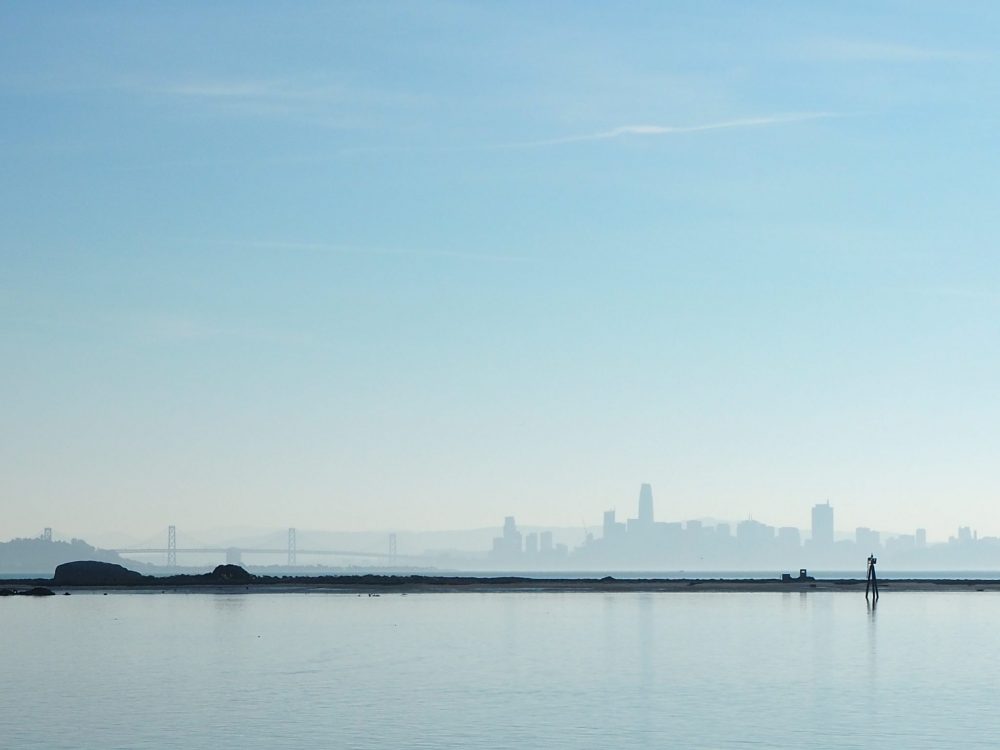
The City of Richmond built the Memorial years before the Rosie the Riveter Museum opened. Shaped like a Liberty Ship, pointing toward the water, it summarizes the Rosie the Riveter stories in photos and text, with quotes from “Rosies” engraved in paving stones.
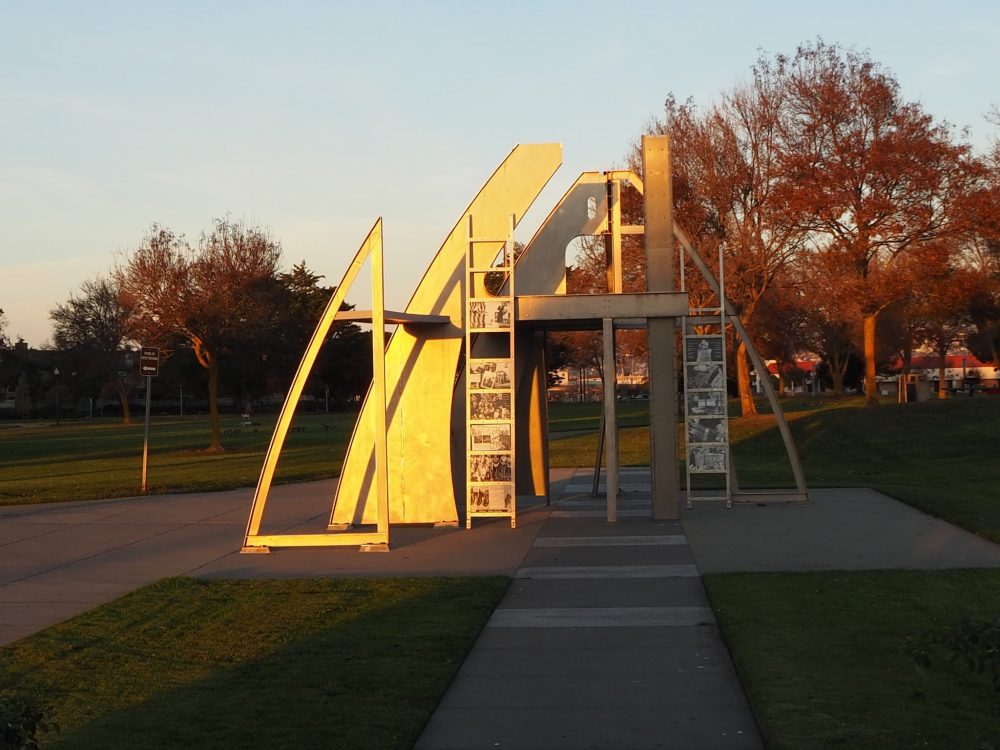
The Ford Assembly Plant
This factory produced 49,000 jeeps and 91,000 tanks and other military vehicles during the war. Various businesses now occupy the building. Inside the Visitor Center museum, however, one exhibit tells about the Ford plant and shows how jeeps were built, then partly disassembled in order to stack neatly.
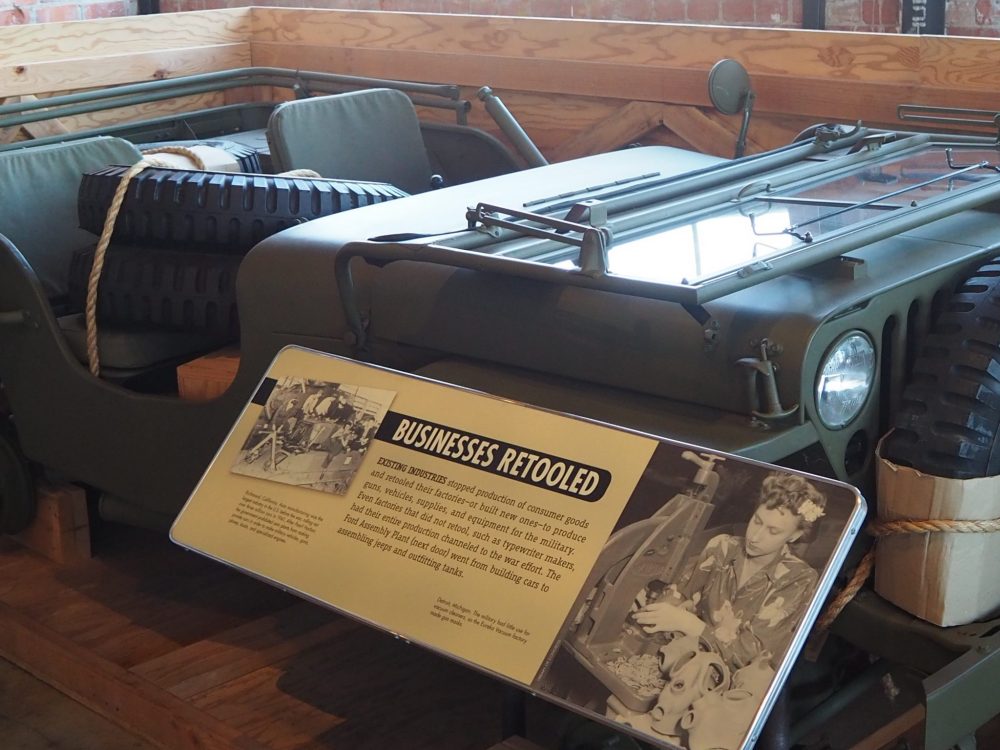
Kaiser Shipyard No. 3 and the SS Red Oak Victory
Originally there were seven Kaiser shipyards, one of which, Kaiser Shipyard No. 3, can be visited by car, which is why we didn’t get to see it except across the water from a distance. In any case, visitors can’t actually enter any of the buildings. Instead, you can drive by the buildings and get a view of the drydocks.
The SS Red Oak Victory was built during World War II at Richmond’s Kaiser Shipyard No. 1. A cargo ship, it also served in the Vietnam and Korean Wars. It’s still in the process of restoration, but visitors can tour it. Since it’s not technically part of the National Historic Park, it does charge a fee to enter.
Related articles: Being A Tourist in San Francisco and An Unmissable Walk in San Francisco
Other sites in Richmond
A number of other sites in Richmond link to Richmond’s role in wartime industry. Most, however, are not open to the public. You can reserve a place on the occasional bus tours covering these sites. Alternatively, pick up a map at the visitor’s center and go see them (only from the outside) on your own.
- At the Kaiser Hospital, the idea of pre-paid health care was born. Kaiser-Permanente is today an enormous HMO.
- The Maritime and Ruth Powers Child Development Centers provided daycare for the children of “Rosies” who worked in the Shipyards. This was also a very new idea at the time.
- As I mentioned before, the influx of workers to Richmond meant terrible housing conditions. Atchison Village was one of several housing projects thrown up to meet the demand. It still exists as a group of private homes.
Visitor Information
Check the website ahead of time for events. In particular, Ranger Betty Soskin’s talks are worth planning a visit around. Soskin was one of the African-American “Rosies” in Richmond, and I have it on good authority that her stories are fascinating.
Rosie the Riveter World War II Home Front Museum: 1414 Harbour Way South, Richmond, CA, behind the Ford factory, after you pass through the security gate. Free admission. Open daily 10:00-17:00.
SS Red Oak Victory: 1337 Canal Blvd., Richmond, CA. Admission: $10. Open Tuesday, Thursday, Saturday, Sunday, 10:00-16:00 during the summer and 10:00-15:00 during the winter.
If you liked this post, please share it!
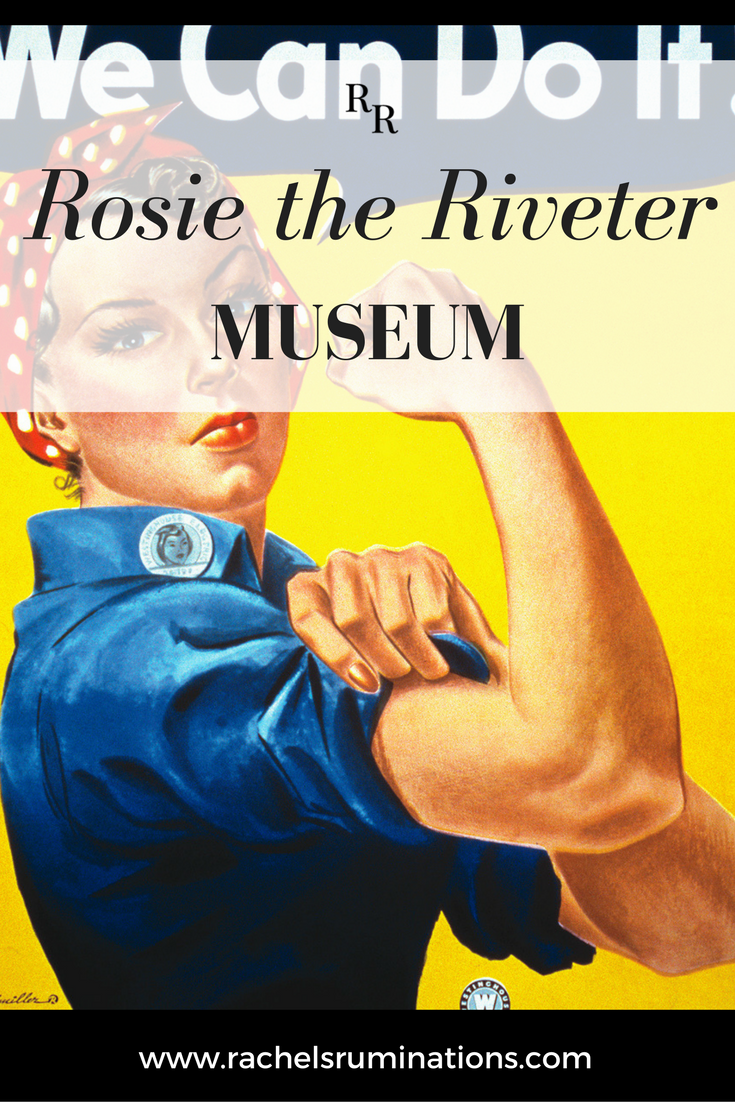
I am a co-host of Travel Photo Thursday, along with Jan from Budget Travel Talk, Ruth from Tanama Tales and Nancie from Budget Travelers Sandbox. If you have a travel blog and want to join in, do the following:
- Add your blog to the linkup, using the link below.
- Put a link back to this page onto your blog post.
- Visit at least a few of the other blogs in the linkup, comment on them, share them and enjoy them!
If you don’t have a travel blog yourself, you can still click on any of the blogs below and visit them!
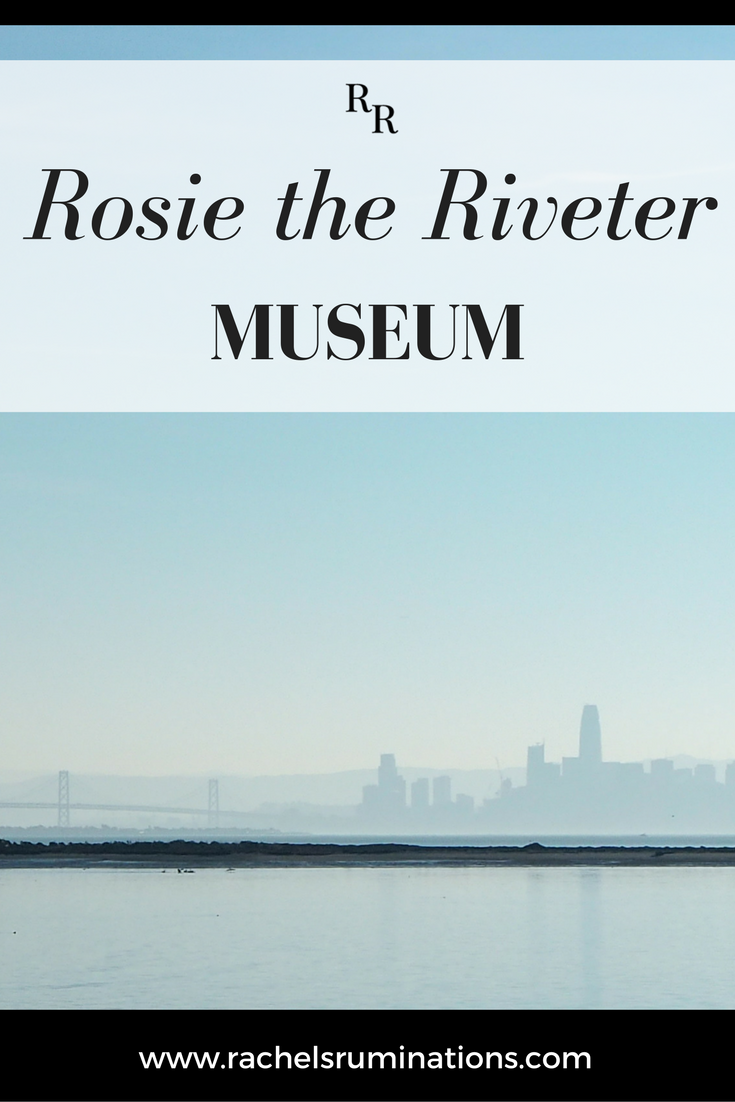
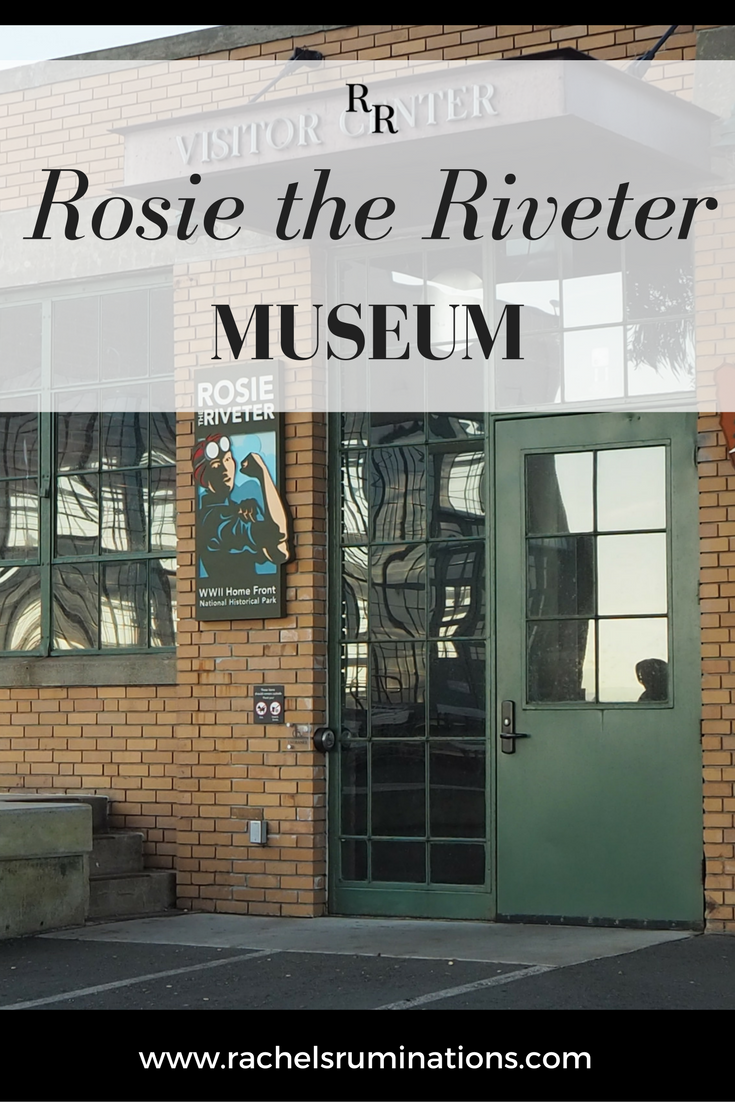


Wow! We never even knew there was a Rosie the Riveter Museum. Thanks for sharing your experience, and adding the tip about bringing a car along for convenience. Looks like we need to add this place to our travel list. Safe travels!
I was familiar with the photo, but not Rosie’s story. If I ever get to San Francisco, I will be sure to visit the museum.
Just make sure to rent a car for the day!
Hi Rachel. This post is very surprising to me! I had no idea that Rosie was American! I always thought she was Canadian, as there is definitely knowledge of her here. Very interesting story. Happy New Year to you!
Since it was the same war effort in both countries, I suppose that they were called Rosies up there as well. Happy New Year to you too!
Yes, this museum is a font of information about Rosie’s during WWII. My mum and aunties were Rosies, and I did submit my story about them to the museum archives and have written about this site as well. http://berkeleyandbeyond.com/Way-Beyond/Travel-Articles/U_S_A_/Rosie-the-Riveters/rosie-the-riveters.html
Thank you! I loved reading the stories from your mum and your aunt. It’s charming to hear how young and carefree they were, even while they were doing such crucial work!
This looks like a great place to visit, especially with a daughter! The graphic is so very powerful, too!
Fascinating! I had no idea that Rosie the Riveter was a real person or that that there was a museum about her.
Thanks for this and for all the detail. I’m a World War II history buff and it never really occurred to me to visit US manufacturing and ship building sites that were so important to the war effort. I’m going to check it out next time we go to SF.
The home front does tend to get ignored, doesn’t it? I think you’ll find it interesting!
My mother was a “Rosie” and was honored on Capital Hill right at the time they were first planning the Rosie the Riveter Museum.I have long wanted to visit the museum and I appreciate you sharing your experience. I hope to get there one day!
I think you’d enjoy it, being able to fill in the voices you hear in the exhibit with your mother’s voice, and to compare the stories.
I know the photo but not the name Rosie the Riveter. I’m glad this museum celebrates all the Rosie’s.
I didn’t know there was a museum dedicated to Rosie. I would love to go to it. So very cool!
I think we all need to read stories and see more places like this. I have worked on the aerospace industry for most of my career. I have been to plants were women used to assembly planes during the war. #TPThursday